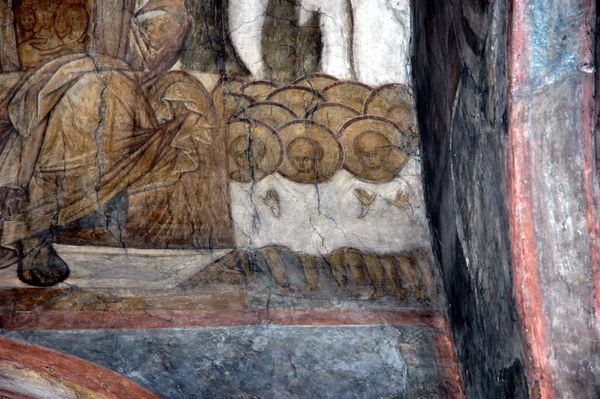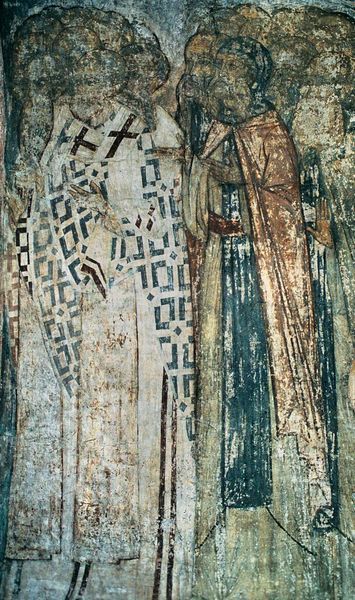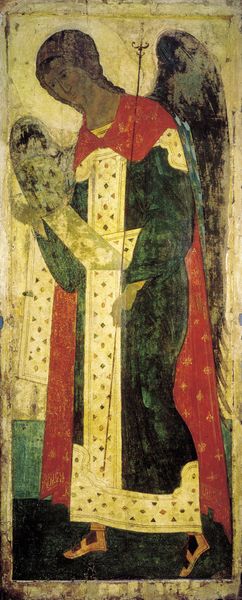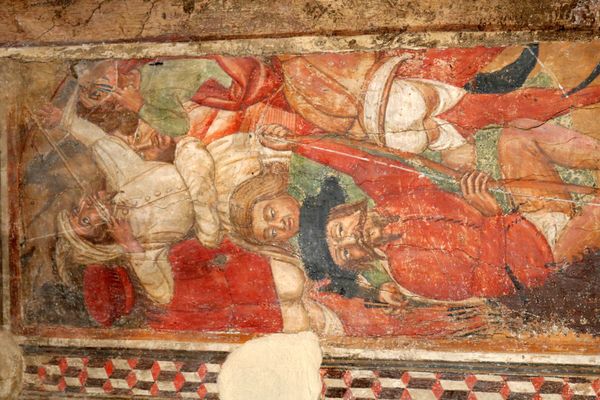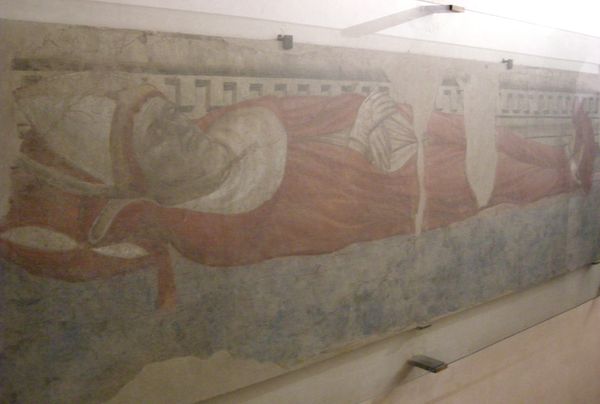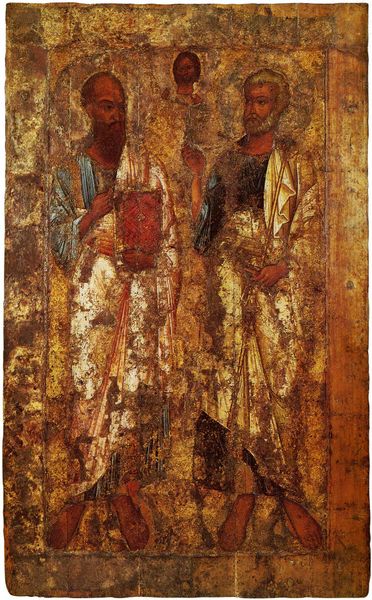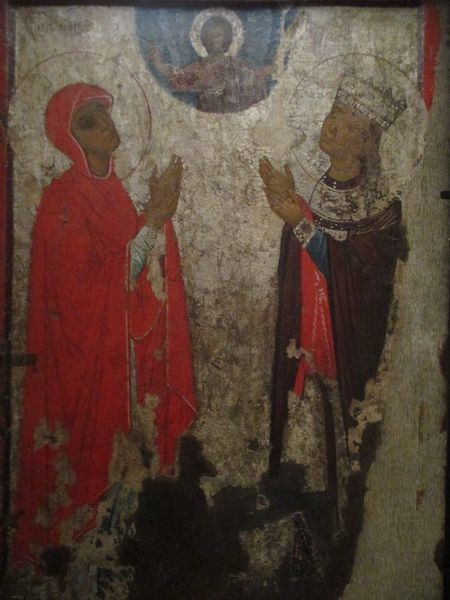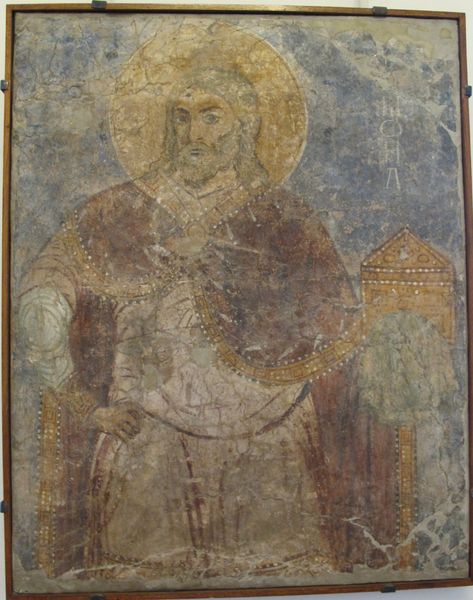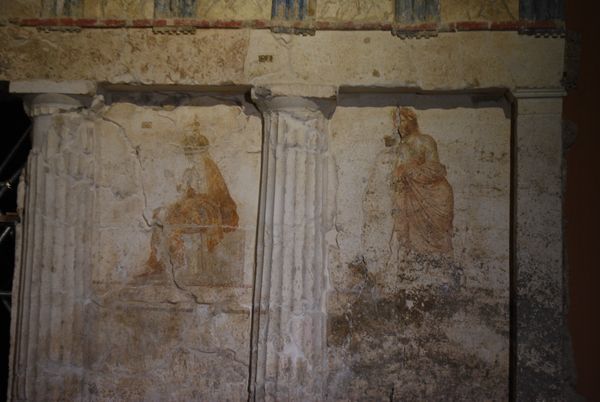
The Last Judgement: Faces of righteous woman 1408
0:00
0:00
andreirublev
Assumption Cathedral, Vladimir, Russia
fresco
#
portrait
#
byzantine-art
#
medieval
#
figuration
#
fresco
#
oil painting
#
christianity
#
history-painting
Copyright: Public domain
Curator: Here we have a section of Andrei Rublev’s fresco "The Last Judgement: Faces of righteous woman," created in 1408 for the Assumption Cathedral in Vladimir, Russia. Editor: What strikes me first is how earthbound they feel, despite supposedly being in paradise. The palette is all muted browns, greys, like dust and old linen. They seem weary. Curator: Indeed. Consider the context: this fresco was created during a period of immense social upheaval and hardship in Russia. The materials Rublev would have used, readily available earth pigments combined with the demanding technique of fresco, speak to both the resourcefulness and the constraints of the period. Fresco demanded working quickly, of course. Editor: The faces are quite individualized, even beneath those draped head coverings. Some are worn, others serene, but there’s a definite sense of lived experience etched on each one. Do you think the quick process aided their honest depictions, that urgency of capturing likeness? Curator: Possibly, and it is also indicative of the Byzantine tradition in portraiture—there is emphasis on character in each individual depicted. But don't mistake speed for carelessness; the deliberate use of line, the modeling of forms—it all points to Rublev's mastery over his medium. He wasn’t just slapping pigment on a wall; he was crafting an image meant to instruct and inspire. Editor: To inspire contemplation, I think, too. It makes you consider the lives these figures might have led, and what they had to do in order to get there. The clothing, though—very similar. And these heavy folds imply a social code beyond personal journeys. Curator: Garments serve as signifiers, don't they? Emphasizing the righteous woman's earthly role while elevating the figures depicted above personal considerations. A deliberate tension that reminds viewers both of human imperfection and a celestial future. Editor: You know, contemplating this work has actually calmed some persistent doubts in my own judgement—like some strange echo across the centuries, inviting a bit of quiet grace. Curator: It is through material creations like this, and our ongoing engagement with them, that the past continues to inform our present, wouldn't you agree?
Comments
No comments
Be the first to comment and join the conversation on the ultimate creative platform.
